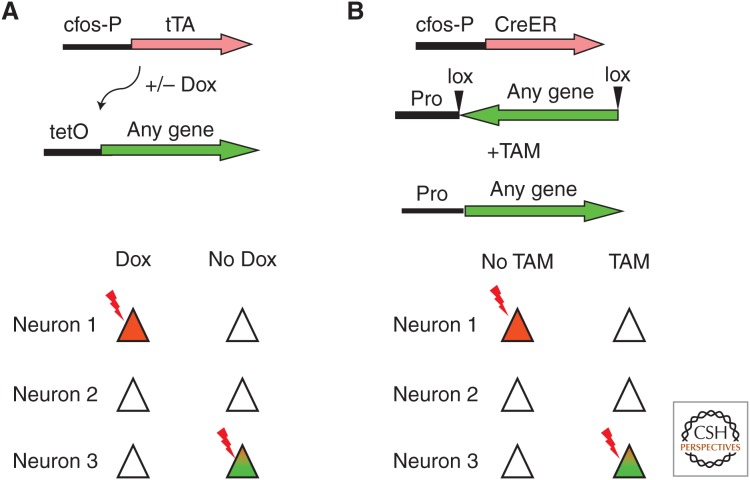Figure 1.
Two systems for the genetic manipulation of active neural ensembles. (A) In this tetracycline (TET)-based system, two transgenes are required, a cfos promoter-driven tetracycline transactivator (tTA) and a tetracycline-responsive element (TRE) promoter-driven gene of interest. In the presence of doxycycline (Dox) the tTA is expressed in electrically active (cfos+) neurons but is prevented from activating expression of the gene of interest by the presence of Dox. In the absence of Dox, a window is opened during which active neurons that express tTA drive expression of the gene of interest from the TRE promoter. (B) This Cre-based system also uses two transgenes, a cfos promoter-driven CreERt2 and a gene of interest that is flanked by loxP sites and positioned in an inverted orientation to any neuronal promoter (Pr). The loxP sites are arranged such that Cre activity will lead to a single inversion event of the flanked DNA. In the absence of tamoxifin (TAM) the Cre recombinase is inactive so that no recombination takes place even in active neurons. On administration of TAM, any active (cfos+) neurons will express the Cre, which is now active, and inverts the orientation of the gene of interest. This gene is then constitutively and permanently expressed from the neurons specific promoter.

